After vanquishing his rivals, Carlo Gambino took control of the Mafia's Commission and made the Gambino family into the most powerful outfit in America.

Wikimedia CommonsBorn in Palermo, Sicily in 1902, Carlo Gambino slowly fought his way to the pinnacle of the New York Mafia and ultimately became the city’s most powerful crime boss.
Though he may not be quite as infamous as Al Capone or John Gotti, Carlo Gambino was perhaps the most powerful crime boss in American history. Between the time he took power in 1957 and his death in 1976, he turned New York’s Gambino crime family into one of the wealthiest and most feared criminal outfits in modern history.
Perhaps even more incredibly, Carlo Gambino himself managed to survive into old age and die of natural causes as a free man at the age of 74. And that’s a distinction few of his competitors, whom he bested time and again during his reign as boss, could ever claim.
From his humble beginnings in Sicily to his ascent in the New York underworld to his unprecedented power over the Mafia Commission, this is the astonishing story of Don Carlo Gambino.

Carlo Gambino Joins The Mafia — And Quickly Finds Himself In A War
Born in Palermo, Sicily on August 24, 1902, Carlo Gambino entered into a family that belonged to the Sicilian Mafia, a small outfit based out of Passo di Rigano. He had two brothers, Gaspare and Paolo, the former of whom stayed out of the mob throughout his life. For Paolo and Carlo, though, the life of a gangster was an attractive one.
Carlo Gambino immigrated to the United States in December 1921, stowing away on the SS Vincenzo Florio and landing in Norfolk, Virginia. Gambino quickly found his way to New York, where he had cousins waiting to greet him. His cousins, the Castellanos, had already made quite a name for themselves in the New York underground — Paul Castellano would even later take over after Gambino had bit the dust.
Shortly after arriving in New York at the age of 19, Gambino became a made man in the Mafia. And he fell in with a group of young Mafiosos known as the “Young Turks.” Led by figures like Frank Costello and Lucky Luciano, the Young Turks had a different view of the future of the American Mafia than the older, Sicilian-born members.
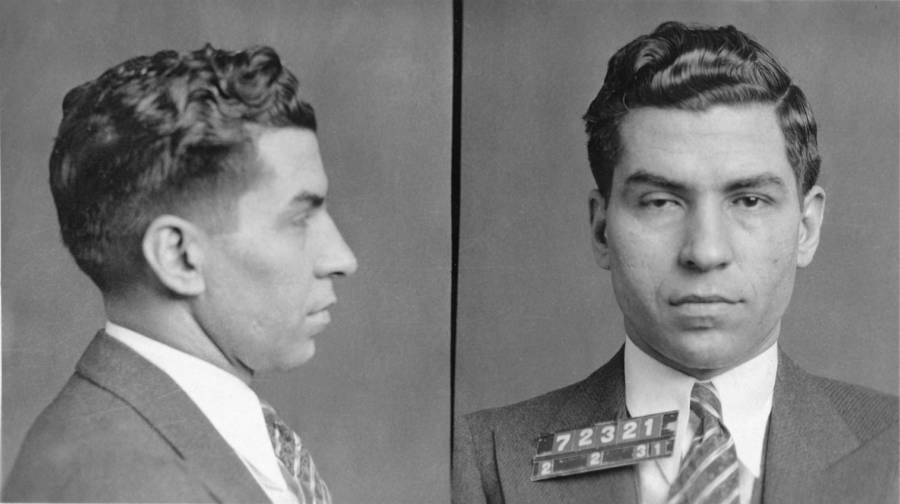
New York Police Department/Wikimedia CommonsLucky Luciano, following his arrest in New York in 1931.
Like the country itself, they thought that the Mafia needed to be more diverse and forge ties to non-Italian organized crime groups, including those spearheaded by Jewish gangsters like Arnold Rothstein, Meyer Lansky, and Bugsy Siegel. But this rubbed many of the old guard of the Mafia, often called “Moustache Petes” by the younger members, the wrong way.
By the dawn of the 1930s, these tensions boiled over into outright war. Dubbed the Castellammarese War, the conflict saw two rival Sicilian factions fighting against each other while also both fighting against the Young Turks. The war decimated the New York Mafia with constant assassinations and violence.
The Young Turks, unofficially led by Lucky Luciano, quickly realized that the violence was destroying their organization. More importantly, it was killing their profits.
So, Luciano made a deal to end the war by organizing a hit on the leader of one of the Sicilian factions, Joe Masseria — with whom Carlo Gambino was aligned — which would put Masseria’s Sicilian rival Salvatore Maranzano in power.
Maranzano would then go on to reorganize the New York mob into what were known as the Five Families. The Five Families were led by Luciano, Joe Profaci, Tommy Gagliano, Vincent Mangano, and, of course, Maranzano himself. But Maranzano was no fool — he knew Luciano wanted more power still. Luciano, for his part, thought Maranzano was equally power-hungry.
Maranzano needed to take care of his Lucky Luciano problem quickly, so he hired Irish hitman Vincent Coll to take Luciano out. But Luciano had friends in his ranks who alerted him to Maranzano’s plan. Together with Vito Genovese and Frank Costello, Luciano went to a little meeting with Maranzano in his Manhattan office — and took him out.
With Masseria and Maranzano out of the way, it was Luciano’s time to take control. Shortly after, he met with Chicago mob bosses to establish a sort of government for organized crime known as The Commission.
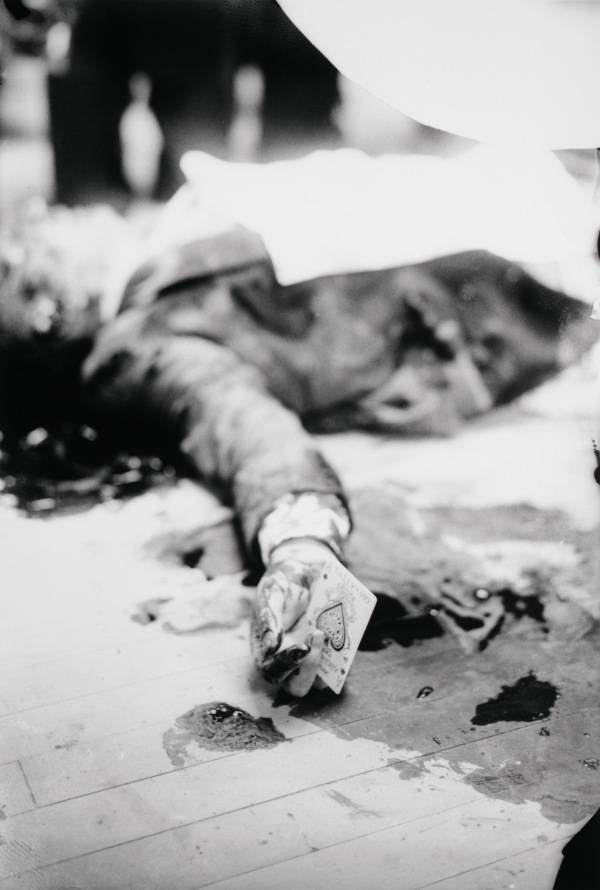
Bettmann/Getty ImagesJoe Masseria shortly after his murder on April 15, 1931.
And soon, within Luciano’s new system, Carlo Gambino would establish himself as a major force in this new Mafia that the Young Turks had built.
Gambino Thrives In A New Mafia Climate
Carlo Gambino thrived in this reborn Mafia and soon became a top earner for his family. And he wasn’t shy about branching out into new criminal schemes. During World War II, he infamously made a lot of money by selling ration stamps on the black market.
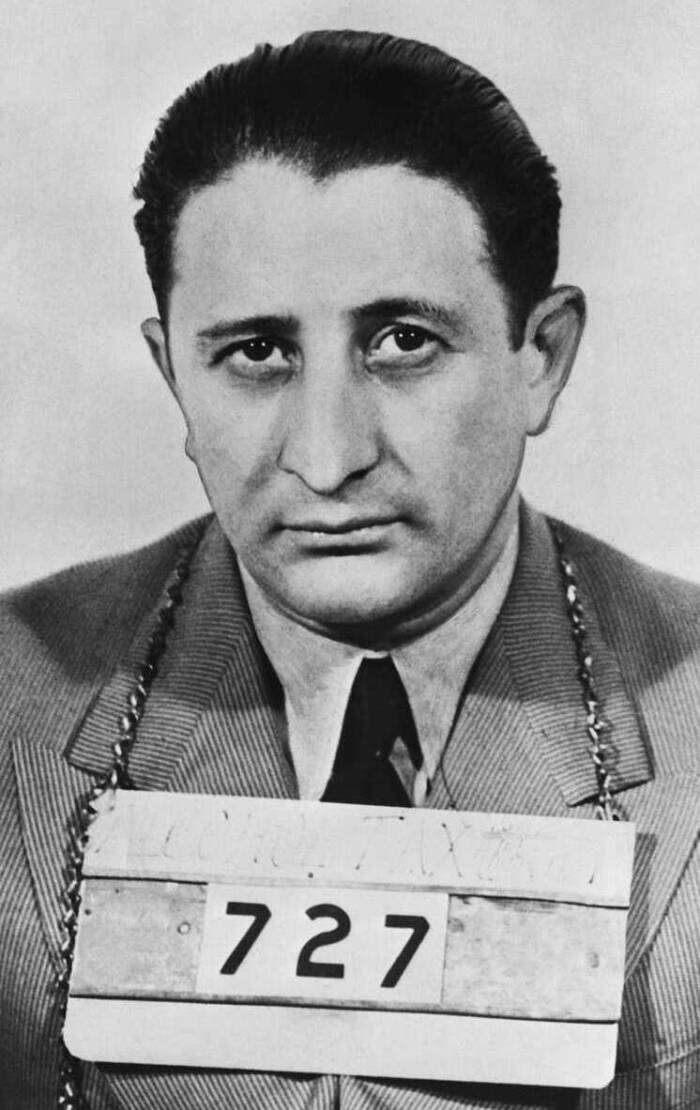
Public DomainBorn in Sicily in 1902 before moving to New York, Mafia kingpin Don Carlo Gambino presided over the Gambino crime family from 1957 to 1976.
Like Vito Corleone, Carlo Gambino wasn’t flashy. He managed to survive in organized crime by keeping a low profile and being a reliable earner. Gambino worked reliably for Vincent Mangano and largely stayed out of major trouble, other than an arrest for tax evasion in 1937 in relation to a large distillery in Philadelphia. Gambino would ultimately only spend 22 months in prison — and it was the only time he spent behind bars throughout his career.
Things started to shake up a bit in the 1950s, though. Philip Mangano, Vincent’s brother, was found dead in Brooklyn in April 1951, and around the same time, Vincent went missing. His body was never found, but he was officially declared dead about a decade later. It’s safe to assume, though, that he was killed — and many were quick to point the finger at Mangano’s second-in-command, Albert Anastasia, who took over in Mangano’s absence.
But by 1957, Anastasia was becoming increasingly paranoid and violent. He had also broken an unspoken taboo in the Mafia about never killing anyone who wasn’t in organized crime when he ordered a hit on a civilian he saw speaking on television about his role in capturing a bank robber.

George Silk/The LIFE Picture Collection/Getty ImagesThe body of Albert Anastasia in the barbershop of the Park Sheraton Hotel, riddled with bullets.
The heads of the other families agreed that Anastasia needed to go and contacted Carlo Gambino about organizing a hit on his boss. Gambino agreed, and on October 25, 1957, Anastasia was gunned down in the barbershop of New York’s Park Sheraton Hotel.
Gambino was now the Godfather of his own family.
How Carlo Gambino Became The Country’s Top Mob Boss And Survived Into Old Age
The Gambino family quickly expanded its rackets across the country. Soon, they were bringing in hundreds of millions of dollars a year, which made Gambino one of the most powerful bosses in the Mafia. Even so, Gambino continued to keep a low profile. And perhaps that’s why he was able to outlast many of the other Young Turks.
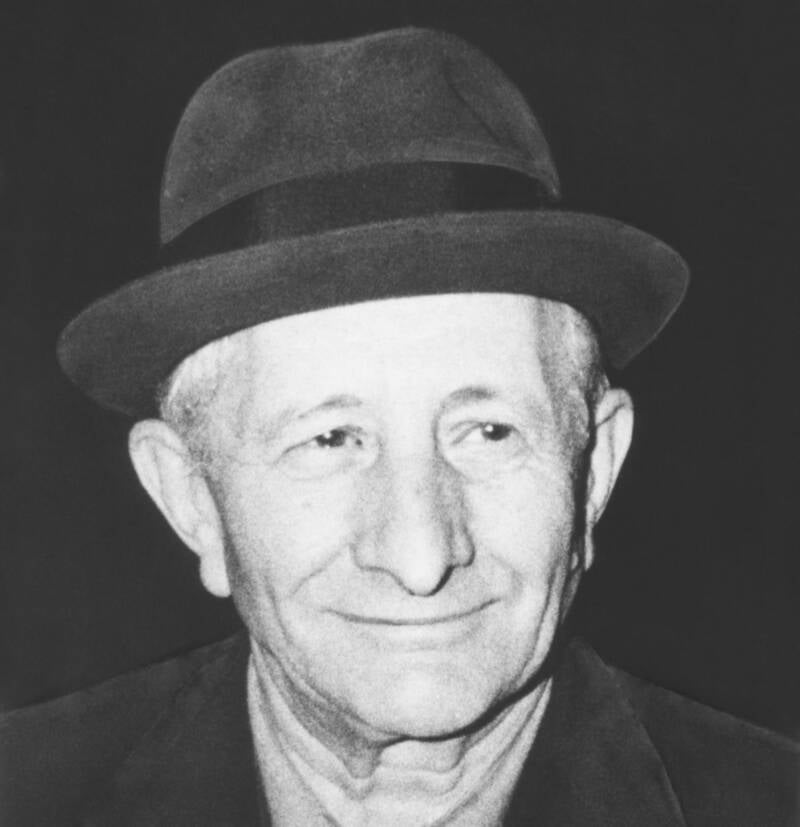
AlamyBoss of the feared Gambino crime family from 1957 until his death in 1976, Don Carlo Gambino ruled as one of the most powerful Mafia leaders of all time.
While other Mafia bosses fell victim to hits or arrests – many organized by Gambino – he continued his role as Godfather for decades. Somehow, he had even managed to dodge arrest when a massive meeting of mobsters at the home of Joseph Barbara in Apalachin, New York got busted.
The police also had a hard time pinning anything on Gambino. Even after placing his home under constant surveillance, the FBI wasn’t able to get any evidence that Gambino was running one of the biggest families in the country.
After two years of surveillance, the tight-lipped Carlo Gambino had refused to give anything up. During one high-level meeting between Gambino and other top Mafia leaders, the FBI noted that the only words they had heard being spoken were “frog legs.”
It wasn’t just his own family that Gambino was running, either — he was in charge of The Commission. When his son eventually married Lucchese’s daughter, the two teamed up and effectively took control of all organized crime in New York. There were those who wanted to see the men taken down, of course. Joseph Bonanno and Joseph Magliocco even attempted to have Lucchese and Gambino assassinated.
Magliocco enlisetd Joseph Colombo to take The Commission leaders out, but Colombo chose instead to inform Gambino and Lucchese of the plan. As a result, Bonanno fled to Montreal, and Magliocco was forced to give up his role as Godfather of his family, ceding control to Colombo. The family was ultimately renamed the Colombo family, as well.
And it made one other thing clear: Gambino was all but untouchable.
In spite of his almost super-human self-control, other made men knew that Gambino was to be feared and respected. One Mafia associate, Dominick Scialo, made the mistake of insulting Gambino at a restaurant after getting drunk. Gambino refused to say a word throughout the incident. But soon afterward, Scialo’s body was found buried in cement.
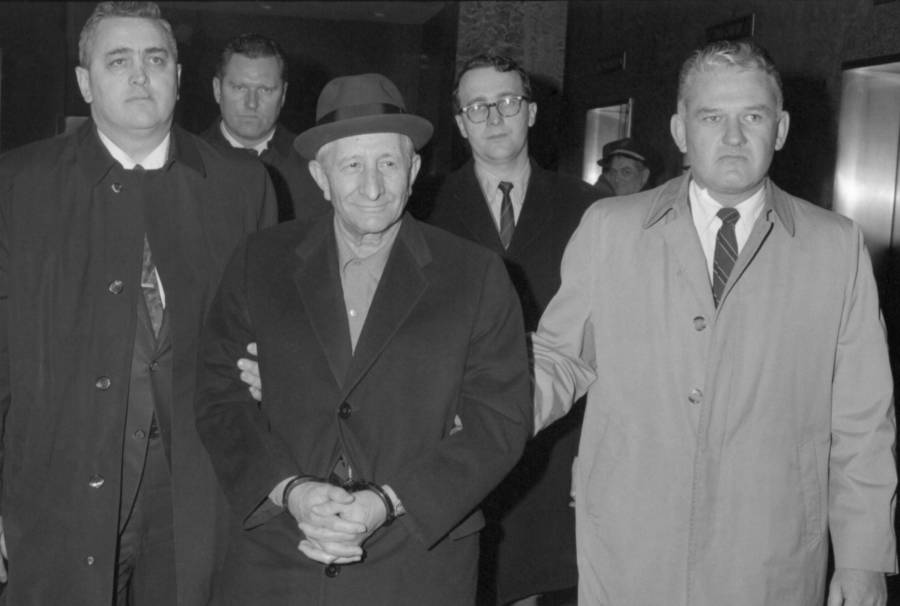
Bettmann/Getty Images Carlo Gambino was arrested in 1970 for arranging a robbery, though the FBI was never able to prove Gambino’s involvement.
Nothing lasts forever, though. Gambino had a history of heart disease, and as he was approaching old age, his health began to fail him.
Carlo Gambino continued to rule his family for another few years. He finally died of a heart attack in 1976 and was buried at a local church near the graves of many of his Mafia associates. Unlike many Mafia bosses, the original Godfather died in his home of natural causes, leaving a legacy as one of the most successful Mafia leaders of all time.
After this look at Carlo Gambino, check out the story of Roy DeMeo, a Gambino family member who made countless people disappear. Then, discover the story of Richard Kuklinski, the killer who claimed he worked for the Gambino family and became the most prolific Mafia hitman ever.






